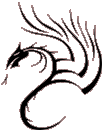Clinical Manifestations
|
- Lichen simplex chronicus (neurodermatitis) is a chronic
inflammatory skin disease characterized by paroxysms
of pruritis and the development of lichenoid changes
of the skin. The disease occurs from repeated scratching
or rubbing, either as a habit or in response to stress.
There is no underlying dermatological disorder.
In TCM, lichen simplex chronicus is also known as Niu
Pi Xuan (ox hide tinea) or She Ling
Chuang (collar sore).
- This condition tends to occur on the nape of the
neck, the wrists, the elbows, the ankles, and the anogenital
region. It may also spread to the limbs, the areas around
the eyes and the sacro-coccygeal region.
- It is more common in adults and is unrelated to season.
- Lesions generally manifest as single or multiple irregular
or polygonal-shaped plaques with intermingled slightly
elevated red papules. The skin in the affected area is
rough with deepened skin creases (lichenification).
- In chronic cases, the lichenified areas become brown
(due to hemosiderin deposition) and are covered by fine
dry scales.
- There is severe pruritis, which is worse during
the night.
- The disease tends be chronic with repeated attacks.
- Differential diagnosis:
Chronic eczema:
This condition often evolves from recurring acute or
subacute eczema. Characteristic lesions manifest as dry,
rough, thickened, and scaling skin, deepening and widening
of the cleavage lines of the skin, and hyperpigmentation
or hypopigmentation. Itching may be moderate or intense;
repeated scratching or rubbing of
the skin often results in obvious lichenification. Although
more usual in easily reached areas, chronic eczema tends
to be more widespread than lichen simplex chronicus.
Lichen planus:
Eruptions usually involve the flexor surfaces of the
wrists and forearms, and the lower legs around and above
the ankles. Lesions manifest as intensely pruritic 2-10
mm flat-topped dull red shiny papules. The surface of
the lesions exhibits a lacy white pattern of lines (Wickham’s
striae). Lesions that persist, most frequently on the
shins, may develop into confluent hypertrophic
plaques that can resemble the lesions of lichen simplex
chronicus, with a coarse surface covered by scales. Mucous
membranes are involved in 40-60% of lichen planus cases.
|
Points |
- LI-4, LI-11, SP-6, SP-10, Ashi points
on the lesion sites (transverse insertion around the
edges of the lesions)
- DU-14, DU-15, DU-16, GB-20i, LI-4, LI-11, PC-6, SP-10, ST-36, UB-10, UB-40
- DU-14, GB-20, LI-4, LI-11, SP-10, ST-36, UB-36, UB-40
- DU-14, GB-20, LI-4, LI-11, SP-6, SP-10
- Insert four or five needles into the healthy skin surrounding the lesions. Insert the needles toward the center of the lesions. Tap the lesions with a dermal needle a few times. Remove the needles and apply cups to the lesions. Remove the cups after 30 minutes. In addition needle LI-4, PC-6, SP-6, SP-10, ST-36. Treat once every other day for ten treatments. When the itching and lichenification have disappeared, discontinue the dermal needling and cupping.
- Direct moxibustion: Ahshi points at
the site of the lesions.
Moxa cones: Place five to seven
moxa cones around the Ahshi points
relatively equidistant from each other
and burn.
Moxa sticks:
Hold an ignited moxa
stick over the areas
of the lesions, adjusting
the temperature according
to the patient’s
tolerance level.
- Indirect moxibustion with moxa cones: Ahshi points
at the site of the lesions. Position a slice of fresh
ginger or garlic over each of the Ashi points.
Place the moxa cones on top of the slices and burn three
to five cones at each point. Treat once a day. A course
consists of ten treatment sessions.
- Encirclement Needling: Ahshi points
at the site of the lesions. Insert
1 cun filiform needles obliquely above, below and to
the left and right of the Ashi points (four
needles in total). Retain for 30 minutes after obtaining Qi.
Treat once every other day. A course consists of five
treatment sessions. This method is used for localized
lichen simplex chronicus (neurodermatitis).
- Encirclement Needling with electroacupuncture:Ahshi points
at the site of the lesions. Insert 1
cun filiform needles obliquely above, below and to the
left and right of the Ashi points with their
tips all directed toward the center of the lesions (four
needles in total). Adjust the frequency according to
the patient’s tolerance level. Retain the needles
for 15-30 minutes. Treat once a day or every
other day. A course consists of ten treatment sessions.
- Cutaneous Needling:
1. Tap the lesions with a seven star needle the apply
cups.
2. Tap the lesions with a seven-star needle After routine
disinfection of the affected area, tap heavily but slowly
from the peripheral area of the lesions to the center
until the skin reddens
and there is slight bleeding. Remove the blood with a
cotton ball, ignite a pure moxa stick and circle the
area about 2cm above the lesions for 10-15 minutes. Treat
once every other day for 10 sessions.
- Ear:
1. Lung, Shenmen, Adrenal, Liver, Subcortex
2. Bleed the posterior auricular vein
- Scalp Acupuncture:
1. Needle the upper three-fourths of the sensory line
bilaterally
2. Needle the area corresponding to the site of the lesions
|

